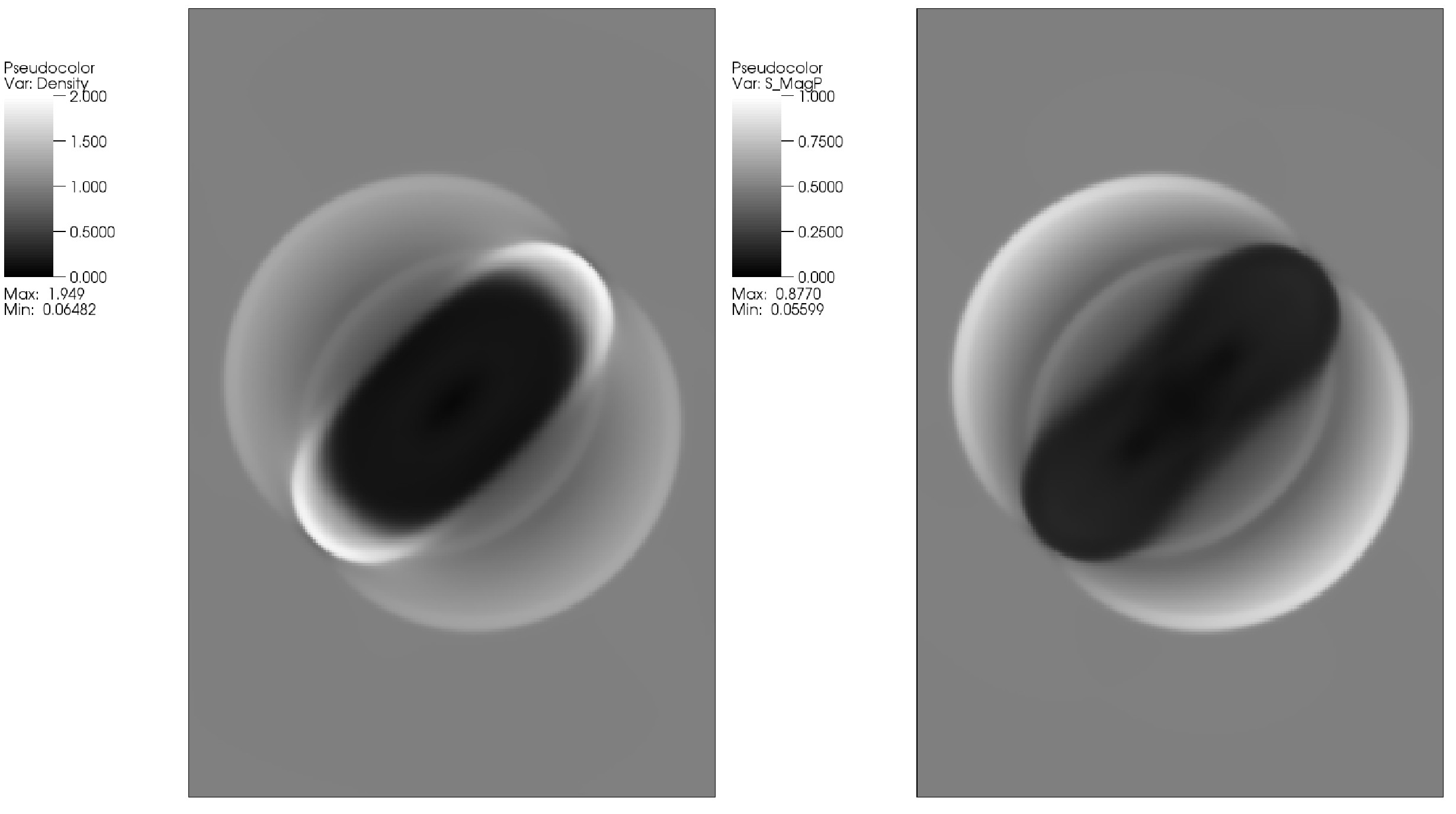A blast wave problem is a good test of the robustness of a code in
modelling 3D shocks and rarefactions. We ran the test problem
in Stone (2009, section 6.5) in 3D at the same numerical
resolution (
 ). The domain has size
). The domain has size
 units; the initial background has a density
units; the initial background has a density
 , pressure
, pressure  , magnetic field
, magnetic field
![$ \ensuremath{\mathbf{B}}_0=[1/\sqrt{2},1/\sqrt{2},0]$](img126.png) , and is at rest. Within a radius
, and is at rest. Within a radius
 from the centre of the domain, the initial pressure is set to
from the centre of the domain, the initial pressure is set to
 (note I think their paper has a typo - they say
(note I think their paper has a typo - they say  ).
The results obtained are almost identical to theirs, and are shown in
figure 2.11. The major difference is that
discontinuities are not quite as sharp, indicating that
the Stone (2009) method is less diffusive than ours. Because of
the robustness of our algorithm, we are able to run the same model
with a field
).
The results obtained are almost identical to theirs, and are shown in
figure 2.11. The major difference is that
discontinuities are not quite as sharp, indicating that
the Stone (2009) method is less diffusive than ours. Because of
the robustness of our algorithm, we are able to run the same model
with a field  stronger, i.e.
stronger, i.e.
 , at which
point the Stone (2009) algorithm fails for
, at which
point the Stone (2009) algorithm fails for
 .
Results are shown at
.
Results are shown at  in figure 2.12.
Note that by this stage the leading outward moving MHD waves have left
the domain due to the much faster wave propagation speeds.
in figure 2.12.
Note that by this stage the leading outward moving MHD waves have left
the domain due to the much faster wave propagation speeds.
Jonathan Mackey
2010-01-07

